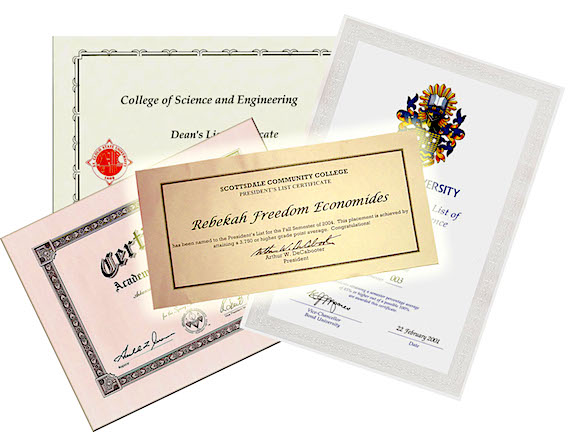We have some of the most generous readers in the world! In response to our articles, “10 Ways to Find Big College Savings” and “Paying for College without a Trust Fund,” we received a couple of thoughtful and very helpful letters. We couldn’t possibly cover every aspect of getting through and paying for college in a couple of articles, so here is our College Wrap-up.
TABLE OF CONTENTS
Slow Down, You Move Too Fast
Deirdre Collins has been a community college instructor in California for 20 years. Here’s what she shared regarding having a part-time job and going to school:
“College requires a great deal more time spent doing work OUTSIDE of class, and the main reason most students fail out of college is that they do not set aside enough non-class time for studying.” She continues, “Students need to have time available to use the library to complete assignments, take advantage of free tutoring services offered on campus, and go to instructors’ office hours to ask questions.”
“It is better to take two classes each semester and earn A’s than it is to take five classes per semester and flunk out. Given the investment in time and money to attend college in the first place, a student should do everything possible to protect that investment so he/she can graduate successfully.”
Deirdre brings up great points. We’ve seen students take 15 to 18 credit hours of rigorous classes in a semester and get totally burned out. What is the rush? Fewer classes and a higher GPA will benefit a student mentally, emotionally and possibly financially if he or she qualifies for academic scholarships. Most scholarships require only a full-time class load of 12 credit hours. If you have a few demanding classes one semester, fill out your schedule with less demanding one-credit classes such as a fitness or dance class, basic computer / Internet class or various internships where you volunteer your time, but get real-life job experience in exchange for writing a short summary paper.
Our kids usually take 12 to 14 credit hours each semester, including some type of physical education class. The schedule works out to a Tuesday/Thursday or a Monday/Wednesday/Friday schedule with three classes in a row and a night class one other night during the week. With this schedule, they’ve maintained great grades and also worked 15 to 20 hours each week.
Dr. Suzanne Tourville, a college professor, and advisor from Colombia, Missouri, added these suggestions:
Transferring Credits
One of the main concerns when transferring (from a community college to a university) is not to waste credit hours. Of course, if taking a course helps you decide on a career path, then it is not a waste; however, I have seen many students who lose significant hours in the transfer or who keep the hours but they are transferred only as electives leaving lots of required hours left to repay. For example, at my school, students need one science class with a lab for general education requirements. This class must be intro biology, intro chemistry, intro environmental science, intro geology, intro physics, or intro astronomy. So a student who took intro to marine biology at another institution gets only elective credit for the course and has to take an additional five-hour science course, not in his major.
Here are a few ways that Dr. Tourville recommends to minimize credits lost when transferring schools:
Ask Questions
If you have a good idea where you are planning to transfer to, get their catalog and make sure that the courses you are taking will transfer. Don’t be afraid to contact an admissions counselor to ask questions. They should be happy to help you. Additionally, if you are not sure that you are getting a complete answer, ask to speak with a faculty department chair.
Get A Waiver
Not all students are aware of the process, but most decisions on transfer credit can be appealed through a waiver process. At my college, students identify a course taken at another institution and give evidence why it meets a general education or major requirement —typically in spirit, if not in exact terms. Waivers with lots of evidence are more likely to be approved. Keep course syllabi, exams, etc., to show what was covered in the course and what level of difficulty the course was. I have seen many examples of course waivers showing something did not transfer that seemed completely bizarre to me; however, transcript evaluators are not experts in all fields and (in my experience) sometimes make clear mistakes. Don’t be hesitant to appeal decisions that seem unjustified or arbitrary.
CLEP It
Instead of retaking a similar course, see if a CLEP or Dante’s exam is available. By showing proficiency in a subject on such an exam and paying an exam fee (about $75) you can get credit for coursework without investing a whole semester.
Transfer “Deals”
Check for agreements between two-year community colleges and four-year institutions. Our college has many of these with state community colleges and they work like this: Attend two years at CC and obtain an associates degree. Then, we waive all general education requirements. Students only need to complete major requirements (and enough total hours to graduate). In my opinion, this allows students to be more flexible in how they meet the general education requirements and don’t risk being made to retake courses due to small discrepancies.
High School AP
I completed college in three years because I brought in 24 hours of credit earned through Advanced Placement (AP) courses. Where I went to high school (in South Carolina) lots of courses were offered and the school paid the cost of the exams. So, one year of college cost me $0.
Scholarship Funds
Most colleges and universities have scholarship packets that can be picked up in February and March. Many departments or colleges will have their own set of scholarships and grants available. Most of these applications are due in the spring. These opportunities will usually be listed on the school’s Web site under financial aid.
Internships
For most students, the purpose of obtaining a college education is to start a first time or new career. Many colleges provide internship programs to assist students in this pursuit. It’s a great way to get your “feet wet” in your chosen career field. Often, if the internship work is performed well, there is a job offer made at the end of the term. Even if an internship doesn’t immediately result in a full-time job, it does result in a bonus on your resumé. Actual working experience is viewed by employers as a plus and may just give you the edge over other job candidates who just have a degree.
If any of you have more input on getting the most out of your college education, we’d love to hear from you. We hope that those of you currently in college or with kids in college will take your efforts to a higher level and have more success with school.

